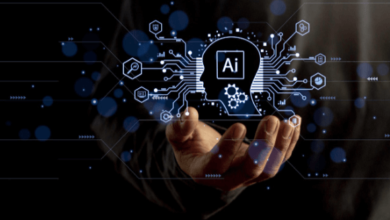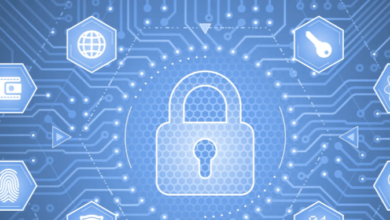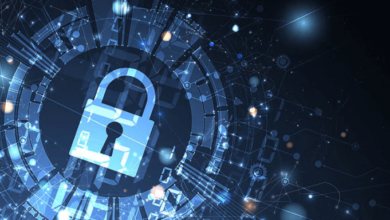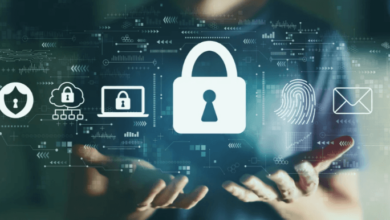The Metaverse Revolution: Bridging Physical and Digital Experiences

The concept of the metaverse is no longer a distant, science-fiction vision of the future but an evolving digital ecosystem that is shaping the way we interact with the world. A fusion of physical and digital realities, the metaverse promises to revolutionize how people work, play, socialize, and experience life in both virtual and real environments. As technology advances at a rapid pace, the boundaries between the digital and physical worlds are becoming increasingly blurred, ushering in a new era of interconnected experiences and opportunities.
The metaverse is an expansive virtual universe, made up of interconnected digital spaces, that allows users to engage with 3D environments and other participants in real time. This revolution in digital interaction combines technologies like virtual reality (VR), augmented reality (AR), blockchain, artificial intelligence (AI), and the internet of things (IoT) to create an immersive, shared environment where users can seamlessly move between digital and physical realities.
The metaverse revolution is poised to transform multiple industries, from entertainment and gaming to business, education, and healthcare. Its potential to bridge physical and digital experiences creates exciting possibilities for enhanced human connection, creativity, and economic opportunities.
The Evolution of the Metaverse
The metaverse has roots in early digital worlds and video games, but recent technological advancements have significantly accelerated its development. Initially conceptualized in the 1992 science-fiction novel Snow Crash by Neal Stephenson, the term “metaverse” referred to a virtual reality space where people interacted through avatars. Since then, technology has evolved beyond mere fiction, giving rise to various virtual worlds such as Second Life, which allowed users to create and inhabit digital environments.
However, the current metaverse extends far beyond traditional video games or virtual simulations. With the rise of VR and AR technologies, users can now engage with highly interactive and immersive digital environments that feel increasingly lifelike. Companies like Meta (formerly Facebook), Microsoft, and Google are investing heavily in building the infrastructure of the metaverse, aiming to create fully immersive digital worlds where users can work, socialize, and play. Blockchain technology has further enhanced the metaverse by introducing decentralized platforms and economies, enabling users to own and trade digital assets securely.
Today, the metaverse is being shaped by emerging trends such as virtual marketplaces, NFTs (non-fungible tokens), and digital real estate. These developments are pushing the boundaries of what is possible in the virtual realm, opening up new avenues for creativity, commerce, and human interaction.
Immersive Experiences and Digital Presence
The metaverse enables immersive experiences that transcend the limitations of the physical world. Through VR and AR, users can engage in lifelike simulations that allow them to experience a sense of presence and interaction in digital environments. This sense of digital presence is a key element in the metaverse, allowing individuals to feel as though they are physically present in virtual spaces, even when interacting remotely.
- Virtual Reality (VR): VR headsets like Oculus Quest and HTC Vive allow users to enter fully immersive digital worlds where they can interact with 3D objects and environments. These experiences create a sense of “being there,” whether the user is exploring a virtual city, attending a concert, or engaging in a meeting.
- Augmented Reality (AR): AR overlays digital elements onto the real world, blending physical and digital experiences. Devices like smartphones or AR glasses enable users to see digital content integrated into their surroundings. This fusion of physical and digital worlds enhances real-world activities, such as shopping, navigation, or learning, by providing additional layers of information and interactivity.
These immersive technologies are redefining how people experience digital content, whether it’s attending virtual events, collaborating in digital workspaces, or even interacting with virtual influencers. In the metaverse, users are not just passive participants; they become active creators and explorers of digital spaces.
Social Interaction and Virtual Communities
The metaverse offers unprecedented opportunities for social interaction and the creation of virtual communities. In a world where social media has dominated digital interaction for years, the metaverse takes social connectivity to a new level by providing real-time, immersive experiences that mimic physical interactions.
Users can create customized avatars that represent their identities in the virtual world, allowing them to express themselves in ways that transcend the limitations of the physical body. Whether attending virtual events, joining online clubs, or engaging in shared activities, the metaverse provides an inclusive space where people from all walks of life can connect, collaborate, and form meaningful relationships.
- Virtual Events: The COVID-19 pandemic highlighted the need for alternative ways to connect and interact when physical gatherings were restricted. The metaverse has become a solution, enabling people to attend virtual concerts, conferences, and even weddings. Platforms like Fortnite and Decentraland have hosted major events, attracting millions of participants to shared virtual experiences.
- Digital Workspaces: The rise of remote work has also driven interest in metaverse-based work environments. Companies are increasingly adopting virtual reality platforms for meetings, training, and collaboration, allowing employees to interact in immersive, 3D environments that feel more natural and engaging than traditional video calls. Platforms like Spatial and Horizon Workrooms provide digital spaces where teams can brainstorm, present, and socialize, all from the comfort of their homes.
In the metaverse, social interaction is not limited by geographic boundaries, allowing people from different parts of the world to collaborate and socialize in real time. This digital community-building potential is transforming the way we think about relationships, work, and social engagement.
Economic Opportunities in the Metaverse
The metaverse is not only a space for entertainment and social interaction but also a burgeoning economic frontier. The development of decentralized economies within the metaverse allows users to engage in commerce, create businesses, and own digital assets in ways that were previously unimaginable.
- Virtual Real Estate: Digital real estate has become a valuable commodity in the metaverse. Platforms like Decentraland and The Sandbox allow users to purchase, trade, and develop virtual land. These digital properties can be used for a variety of purposes, such as building virtual storefronts, hosting events, or creating customized experiences. The rise of digital real estate has led to substantial investments, with some virtual properties selling for millions of dollars.
- NFTs and Digital Assets: Non-fungible tokens (NFTs) have emerged as a key component of the metaverse economy. NFTs allow users to own unique digital items, such as art, music, or virtual clothing. These assets can be bought, sold, and traded on blockchain platforms, creating a decentralized marketplace for virtual goods. For creators, the metaverse offers a new way to monetize their content, as digital art, fashion, and music become integral parts of the virtual world.
- Virtual Commerce and Brands: Major brands are increasingly establishing a presence in the metaverse to engage with digital consumers. Fashion brands, for instance, are creating virtual clothing that users can purchase for their avatars. In addition, metaverse marketplaces are emerging, where users can shop for digital products, attend virtual fashion shows, and even visit virtual shopping malls. This integration of commerce into the metaverse allows businesses to reach new audiences and create innovative marketing experiences.
The economic potential of the metaverse is vast, offering opportunities for entrepreneurs, creators, and investors to participate in a growing digital economy. As the metaverse continues to expand, the lines between physical and digital commerce will continue to blur, creating new possibilities for business and trade.
The Metaverse in Education and Healthcare
Beyond entertainment and commerce, the metaverse is also showing potential in fields like education and healthcare. By bridging physical and digital experiences, the metaverse offers unique opportunities to enhance learning and medical care.
- Education: Virtual learning environments in the metaverse allow students to attend classes, participate in simulations, and collaborate on projects in an immersive setting. Virtual classrooms can simulate real-world environments, enabling students to engage in hands-on learning experiences. For example, medical students can practice surgeries in a VR environment, while history students can explore ancient civilizations in 3D. The metaverse has the potential to transform education by making it more interactive, accessible, and engaging.
- Healthcare: The metaverse is also being used in healthcare for telemedicine, mental health therapy, and rehabilitation. Virtual reality therapy, for instance, has shown promise in treating conditions like PTSD and anxiety by immersing patients in controlled, therapeutic environments. Additionally, medical professionals can use VR simulations for training, allowing them to practice procedures in a risk-free, virtual setting.
These applications demonstrate how the metaverse can offer practical solutions for education and healthcare, creating more immersive and effective experiences for students, patients, and professionals.
Challenges and Considerations
While the metaverse offers immense potential, it also raises several challenges and concerns that need to be addressed as it continues to develop. Privacy, security, and digital ethics are among the most pressing issues.
- Privacy: As the metaverse collects vast amounts of user data, including personal interactions, biometric data, and purchasing habits, concerns about privacy are growing. Ensuring that user data is protected and not exploited for commercial gain is a significant challenge for developers and regulators.
- Security: The decentralized nature of the metaverse opens up new risks for cyberattacks, hacking, and fraud. As virtual economies grow, securing digital assets and protecting users from malicious activities will be essential for the metaverse’s long-term viability.
- Digital Divide: Access to the metaverse requires advanced technology, such as VR headsets and high-speed internet, which may not be available to everyone. Ensuring that the metaverse is inclusive and accessible to people from all socioeconomic backgrounds is crucial for preventing a digital divide.
Despite these challenges, the metaverse continues to evolve, offering exciting possibilities for bridging physical and digital experiences in ways that were once thought impossible.
Conclusion
The metaverse revolution is reshaping how we engage with both the digital and physical worlds. By creating immersive experiences, fostering social interaction, and opening up new economic opportunities, the metaverse bridges the gap between these two realms, offering endless possibilities for entertainment, commerce, education, and beyond. As the metaverse continues to grow and develop, it promises to revolutionize not only how we experience digital content but also how we live and work in an increasingly interconnected world. The future of the metaverse is bright, and its potential to transform human experiences is only just beginning.



